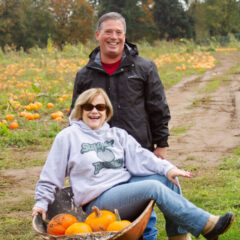Grow your affiliate income with blogging tips tailored for affiliate marketers. From content ideas to SEO, learn how to write posts that attract readers and drive sales.
Why Blogging Works for Affiliate Marketing
Blogging is a pretty handy tool for affiliate marketers. Instead of just dropping links everywhere, a blog lets you build trust with your readers, explain products in detail, and solve real-world problems. It’s popular because it gives people a reason to keep coming back, which is super important when you’re aiming to grow affiliate income over time.
Most big affiliate programs, like Amazon Associates and ShareASale, actively encourage bloggers to join because well written content drives people to buy. And with over 600 million blogs out there, it’s clear that blogging is a well traveled road for affiliate marketers of all experience levels.
Writing blog posts also keeps you on the right side of most affiliate policies and search engine guidelines. Google actually rewards helpful, authentic recommendations. That’s why affiliate bloggers who add real value tend to see the best results. My experience shows that when you focus on helping your audience first, the commissions follow naturally.
Setting Up Your Affiliate Blog for Success
Getting your affiliate blog off the ground isn’t as hard as it might seem, but a strong foundation really matters. Here’s what helps:
- Pick a niche you understand: Writing about topics you genuinely like (or at least get) makes researching and creating content so much easier. Plus, readers can sense when you know your stuff.
- Choose a reliable blogging platform: Platforms like WordPress.org offer the flexibility and plugin options you’ll need, especially as your blog grows.
- Set up tracking early: Adding Google Analytics and your affiliate dashboards from the start makes it super easy to see what’s working; and what isn’t, right from the first post.
The design of your blog matters too, but don’t wait for perfection. Clean navigation, readable fonts, and a mobilefriendly theme are more than enough to get started. You can always upgrade the look down the road as you learn what your audience wants.
– Turn your own Hobby/Niche website into revenue.
– Monetize content based on your interests and goals.
– Also monetize Social Media and YouTube.
– Step by step training, tools and support. Everything you need for success.
– Your own AI powered website.
– Try it FREE to see if the program is right for you. No credit card needed.
Content Ideas That Drive Affiliate Conversions
Many new affiliate bloggers get stuck wondering what to write about. Here are post types that I’ve found really helpful in turning readers into buyers:
- Product reviews: Honest, detailed reviews (with your affiliate link) help readers make decisions quickly.
- Comparison posts: Side by side comparisons highlight pros and cons, making it easy for readers to choose, and click your links.
- How-to guides: These posts show products in action, which builds trust and helps readers imagine using the product themselves.
- Resource lists: Collections of useful tools, books, or services (including your affiliate picks) see a lot of clicks, especially if you update them regularly.
Pepper your content with real life examples. If you’ve used a product yourself, share your experience, including any problems you hit along the way. People trust honest bloggers much more than those who only hype up every item.
SEO Strategies for Affiliate Blogs
Getting found on Google is one of the best ways to grow your affiliate income passively. SEO, or search engine optimization, is basically about helping people find your awesome posts when they search for answers or product recommendations.
- Research keywords people search for: Use simple keyword tools like Google Keyword Planner or Ubersuggest to see what your audience is looking up.
- Write clear, specific titles: Include your main keyword in the title and make it clear what the post is about. For example, “Best Camping Stoves for Beginners.”
- Add internal and external links: Link to other helpful posts on your blog and to trustworthy sources outside your blog. This helps Google, and your readers, see you as a helpful resource.
- Optimize for speed and mobile: People bounce right off slow or clunky sites. Compress images, use a simple theme, and test your site on your phone.
Make sure your affiliate links are labeled (for example, with a small disclosure), and avoid keyword stuffing; just write naturally. Over time, solid SEO pays off, bringing you steady traffic and sales.
Common Challenges (and How to Handle Them)
Affiliate blogging comes with a few bumps in the road, especially early on. Here’s what trips most people up and ways to get past them:
- Low traffic: It takes time for Google to notice your blog. Keep publishing consistently and share your posts on social media to jumpstart things.
- Link management headaches: Affiliate links can change and break. Using a plugin or tool to organize and update your links saves a lot of stress.
- Balancing helpfulness with promotion: It’s easy to go overboard with sales talk. The more you help, the more people trust you, which eventually leads to more clicks and commissions.
- Staying compliant: Most affiliate programs and regulations require you to disclose your partnerships. Place a small but clear disclosure at the top of each post with affiliate links. The FTC Endorsement Guidelines have more info on this.
Handling Low Traffic
Almost every affiliate blogger starts with tiny traffic numbers. It’s a rite of passage. I recommend focusing on answering real questions people have and sharing your posts in helpful communities; think relevant Facebook groups or forums. Over time, word spreads and the search engines start sending more visitors your way.
Managing Affiliate Links
Affiliate links sometimes expire or need updating. Tools like ThirstyAffiliates or Pretty Links (for WordPress) make organizing, cloaking, and updating links super simple. This saves a lot of manual work and helps keep your site clean.
Advanced Blogging Tricks to Boost Affiliate Sales
Once you’ve got a few posts online and some traffic rolling in, try these nextlevel strategies for affiliate blogging:
- Email lists: Collecting emails lets you follow up with readers, share new reviews, and highlight special deals directly in their inboxes. I use simple optin forms, and even basic newsletters help give a boost to repeat readers (and sales).
- Freshen up old posts: Go back every few months to update links, add new info, or include recent personal experiences. This keeps posts ranking higher and more helpful for readers.
- Experiment with affiliate programs: Don’t lock yourself into one network. Try different programs, compare commissions, and see what suits your style and audience best.
- Add personal stories: Share when and how you actually use the products. These details help your reviews feel authentic and relatable, which encourages more clicks.
Testing new affiliate banners, widgets, or calltoaction buttons can also help lift your clicks and commissions. Just check that your site doesn’t get too cluttered or pushy; your best bet is always to keep it helpful above all.
Real-World Uses for Affiliate Blogging
Affiliate blogging isn’t just about chasing commissions. It helps you:
- Build authority: By sharing useful advice, you become a goto resource for readers and brands alike.
- Test new products for free: Many affiliate programs offer free samples or discounts, saving you money and helping you create authentic content.
- Connect with brands: When your blog grows, brands may reach out for partnership opportunities, sponsored posts, or exclusive deals.
- Generate passive income: Helpful, evergreen posts can bring in sales months or even years after publishing, giving you a steady income stream.
Examples include tech review blogs, kitchen gear sites, fitness gear guides, and even pet care blogs. Just about any interest can work as long as people are searching for solutions or buying products online.
Frequently Asked Questions
Question: How many blog posts do I need to start earning with affiliate marketing?
Answer: There’s no fixed number, but having at least 10 to 15 helpful posts gives your readers, and Google, plenty to explore. Over time, focus on quality and updating existing content.
Question: Do I have to buy every product I review?
Answer: No, but using products personally helps a lot. You can research user reviews and provide honest summaries, but always say if you haven’t tried something yourself.
Question: Can I use images from affiliate programs in my posts?
Answer: Yes, most affiliate programs provide banners and product images for you to use, but doublecheck their rules. Avoid just grabbing images from Google.
Question: How long does it take to make decent money from affiliate blogging?
Answer: It depends on your niche, your effort, and your traffic. For most, it’s a few months before seeing steady sales, but every post builds momentum.
Ready to Grow Your Affiliate Blog?
Affiliate blogging takes patience and steady effort, but the rewards can be pretty great if you stick with it. Starting with a clear niche, focusing on helpful content, and always improving your SEO pays off in the long run. Try a few of these tips, and you might just find that blogging becomes your favorite way to earn online while helping others make smart buying choices!
Here’s a little transparency: Our website contains affiliate links. If you click and make a purchase, we may receive a small commission. Don’t worry, there’s no extra cost to you.




